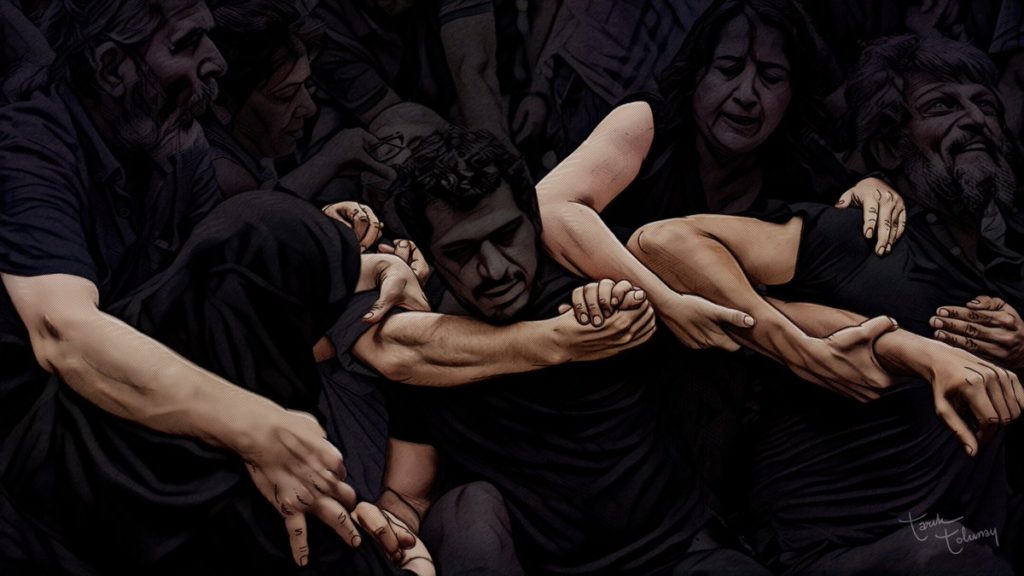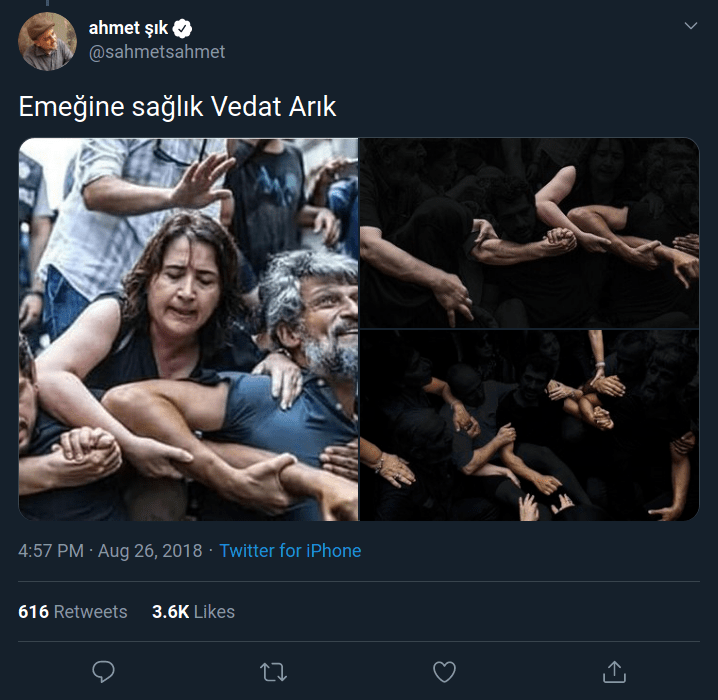Rembrandt moments of photojournalism #1
There is a certain theme of expression in photojournalism in recent years that I’m drawn to; it is more like a “mode” in music, rather than a topic. It is not really about the type of content. It is rather a “gesture to being eternal” that is evoked in those beautiful images of conflict and social upheaval. There is a co-existence of tension and motion with serenity that marks these photojournalistic images that make them stand out among other images of daily news cycles. These images also have very good light and contrast; some aesthetic elements that are probably improved during postproduction. (Whether analog or digital, photography has always had a “postproduction” process. It is not peculiar to digital photography.)
It will become clearer when there is eventually a number of posts in the series. Most of these recent photojournalistic photographs remind me of Rembrandt’s paintings, particularly through which he delivered his social commentary, such as The Night Watch, according to the reading of the director Peter Greenaway in his film Nightwatching (2007), and the following documentary he made, Rembrandt’s J’Accuse (2008). The painting depicts people posing, there is a complete standstill. Yet, looking closely, looking at it with a better understanding of the context it was taken, there is so much tension, so much at risk, and so much information conveyed.
I call these journalistic photographs “Rembrandt moments of photojournalism”. I think they are stunning not only because of the content, which creates a surprise effect in the audience that is generally associated with photojournalistic images, but also because of their composition and use of light, that is, their aesthetic qualities which bring about a contemplation of the moment captured, its meaning, its significance, not unrelated to the content, but taking it beyond to something else. Let me elaborate this “something else” by looking at my first example.

Photo credit: Vedat Arık/Cumhuriyet, image is reproduced as it appeared on Evrensel newspaper’s website.
August 25, 2018.
This is an image captured by the photojournalist Vedat Arık, on the 700th meeting of the Saturday Mothers on a Saturday. As the officials announced that they will not allow the sit-in to be convened at its usual place, at the corner of the High School Galatasaray on the pedestrian-only Istiklal Avenue, the police tried to disperse the crowd using water canons, plastic bullets, and tear gas. Those seen on the photograph were sitting in front of a water cannon, with the canon pointing toward hundreds of those who came earlier together that day, standing behind at the background off the image frame. The people in the foreground are familiar to the public in Turkey, as four of them are MPs from the People’s Democratic Party, and in between them on the floor, the younger figure is Arat Dink, the son of Hrant Dink. Hrant Dink was an Armenian journalist, founder of the newspaper Agos in Istanbul, who was assassinated in 2007 in front of the newspaper’s office. The lining up of the bodies, all turning their torso towards the middle, coalescing with arms linked to each other, creating a protective chain around Arat Dink, shows them in the act of preventing police officers from taking him into custody. The one on Arat’s left, Ahmet Şık, is also a journalist who had spent a year in prison for writing a “book” before it was published, and the woman in front of him, showing her in the act of fixing Ahmet Şık’s glasses, is another MP, an Islamist woman activist, Hüda Kaya. The woman on the right of Arat is again another MP from the same party, Serpil Kemalbay, and again on the right, the man with a beard is yet another MP, Garo Paylan, who is also Armenian. The line of men standing behind this group on the floor are plain clothes, and behind them are cops wearing vest, charging the group from all sides to separate them. The charge was physical despite the fact that they are elected members of the parliament. The photograph doesn’t convey this charge, and so the viewer might not complete the charge in their imagination upon seeing this image unless they are not familiar with police arrests, either from experience or from video imageries. The image depicts both a standstill and a lot of emotions, and tensed bodies caught up in the act. It makes one wonder what was taking place, how the bodies got entangled in that way. But that entanglement, for those who are familiar with Turkey and its recent past and the people in the frame, conveys a determined resistance to history repeating itself. I believe this is why this particular photograph has touched a lot of people in and from Turkey at the time, as attested by the wide circulation of this image on social media platforms and many news outlets using the same image in their news stories.
The video footage showing the moment this photograph was taken is here. This is a trigger warning.

